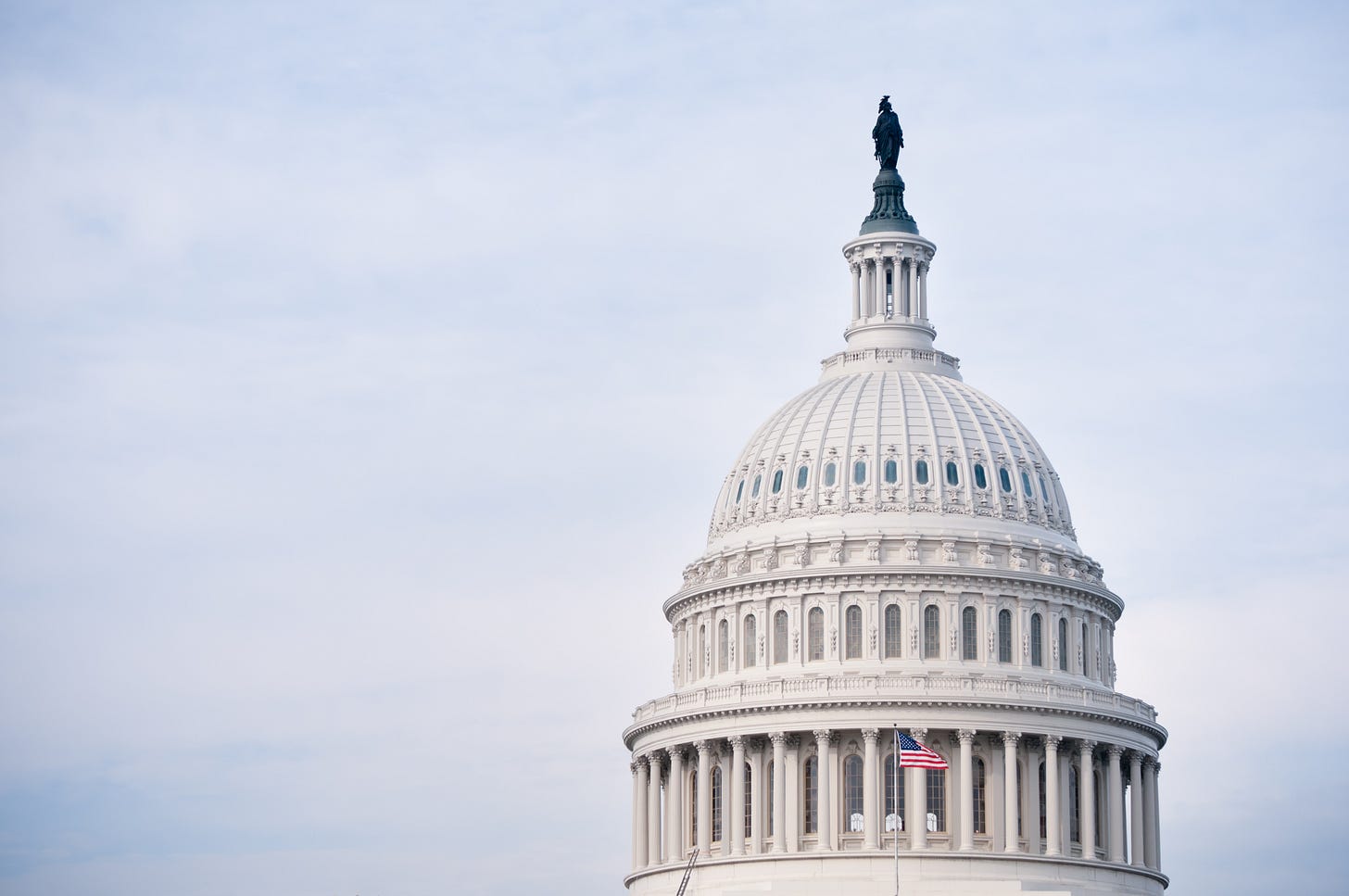Debt Digest | Real Spending Reform Is Still Missing from the GOP’s Budget Plan
Links & Fiscal Facts

Here are this week’s reading links and fiscal facts:
Real spending reform is still missing from the GOP’s budget plan. The Wall Street Journal’s (WSJ) Richard Rubin quoted Boccia on the House’s reconciliation bill: “While Republicans were campaigning on reducing spending and controlling the growth in the debt, once they put pen to paper, their real priorities demonstrate that they care a lot more about cutting taxes than cutting deficits. [Concerningly,] Relying on economic growth has become the magic wand that Republicans are waving at any possible problem [...].“ GOP lawmakers still have time—and options—to include meaningful spending cuts in the reconciliation package, such as immediate repeal of all Inflation Reduction Act (IRA) energy subsidies and structural Medicaid reforms like ending the provider tax loophole and converting Medicaid into a capped block-grant program or reducing the federal matching rate, starting with reducing the amount the federal government pays states to insure able-bodied, childless adults over pregnant women, children, and Americans with disabilities.
Moody’s downgrade is a reminder that entitlement reform cannot wait. Treasury Secretary Scott Bessent said last November: “These entitlements [Social Security and Medicare] are massive. I think the next four years isn't the time to deal with them, that we've got to deal with the discretionary portion of the budget and get that under control.” However, Moody’s downgrade of US debt—citing the lack of progress on reining in mandatory spending—is a stark warning that delaying reform isn’t an option. Notably, as the Bridgewater Associates founder Ray Dalio has pointed out, “credit ratings understate credit risks because they only rate the risk of the government not paying its debt. They don't include the greater risk that the countries in debt will print money to pay their debts thus causing holders of the bonds to suffer losses from the decreased value of the money they're getting.” As Boccia argued recently: “It’s time for Congress to set up an independent fiscal commission—a Budget Realignment and Control Commission or fiscal BRAC—to initiate the economically necessary but politically difficult entitlement and tax loophole reforms that are long overdue.”
CBO’s rosy interest rate assumptions understate the threat of a debt crisis. Manhattan Institute’s Jessica Riedl warns in an X post: “The biggest story few are talking about: CBO projects that the government's interest rate never exceeds 3.6% over 30 years. If rates remain at 4.5%, that adds $40 trillion more to interest costs over 30 years - as much as adding a second Defense Department.” As a reminder, the federal government already spends more on interest costs than on defense, and as of this writing, the 10-year Treasury yield is around 4.5 percent while the 30-year yield hit 5 percent for the first time in a while following Moody’s downgrade. Riedl adds: “Washington has bet its fiscal future on the assumption that interest rates remain below 4% forever. If they are wrong - and the 10 year Treasury is currently at 4.5% - an eventual debt spiral awaits (see chart below).”
Reducing spending avoids a debt crisis and boosts economic growth. American Enterprise Institute’s Mark J. Warshawsky notes that tax revenues have slightly declined from 18.79 percent of GDP in 1996 to 16.96 percent in 2024, while spending has increased from 18.43 percent to 24.55 percent over the same period. He argues: “Analysis of historical norms indicates that the majority of future effort to reduce the deficit and growth in debt should come on the spending side.” Warshawksy also pinpoints the key drivers of this spending growth—Social Security and health care programs. Congress should rein in runaway entitlement spending not only because it’s the main cause of persistent deficits and rising debt, but also because doing so would boost the economy. As Boccia and Lett have written: “A credible commitment to reducing future debt and taxes results in higher long-term disposable income for individuals, motivating more consumer spending today. This surge in consumption more than offsets the initial reduction in entitlement benefits, demonstrating that fiscal discipline can create a win-win for the economy.”
The Fiscal Commission Act has worthy goals—but its design should be improved. Last week, representatives Scott Peters (D-CA) and Bill Huizenga (R-MI) reintroduced the Fiscal Commission Act, which would establish a bipartisan fiscal commission to address the nation’s unsustainable fiscal trajectory. The commission would include 12 lawmakers from both parties (6 from each chamber and party) and 4 non-voting outside experts, tasked with identifying policies to stabilize the debt-to-GDP ratio at 100 percent by 2039 and to improve the solvency of the programs that are governed by trust funds (Medicare, Social Security, Highway). While the commission has prudent goals, it has two main structural flaws compared to a BRAC-like fiscal commission that Boccia has proposed. First, unlike the model outlined in the bill, a BRAC-like fiscal commission would primarily rely on independent experts, enabling a more objective assessment of policy solutions. Additionally, a BRAC-style model would use silent approval, meaning its recommendations would take effect automatically unless Congress votes to reject them, whereas the Fiscal Commission Act requires an affirmative vote—introducing political risk that could undermine the commission’s effectiveness.






Excellent article. Beautifully written and right on target. Please follow my substack, Congress is Vital, https://tommast.substack.com/p/congress-is-vital-ff6 Tom Mast